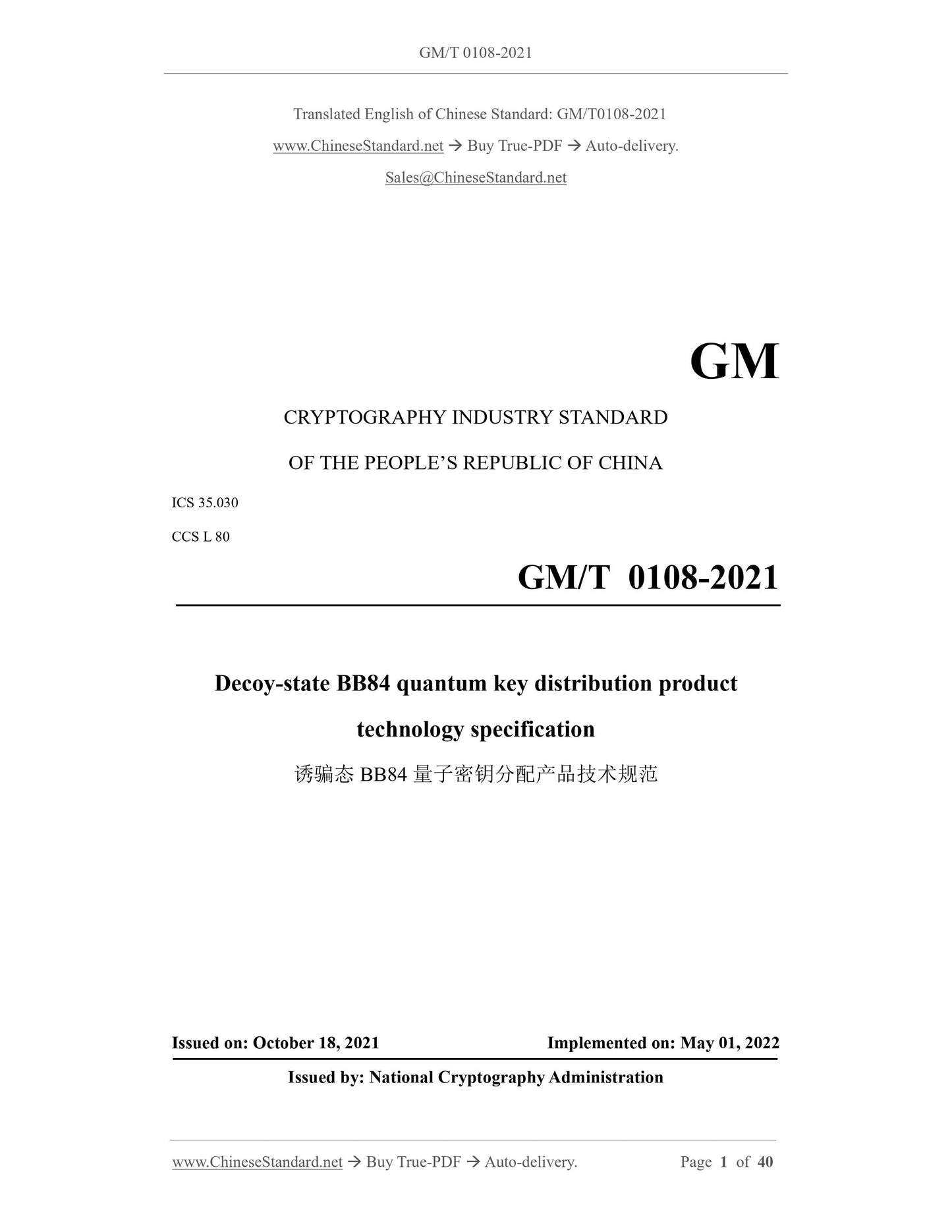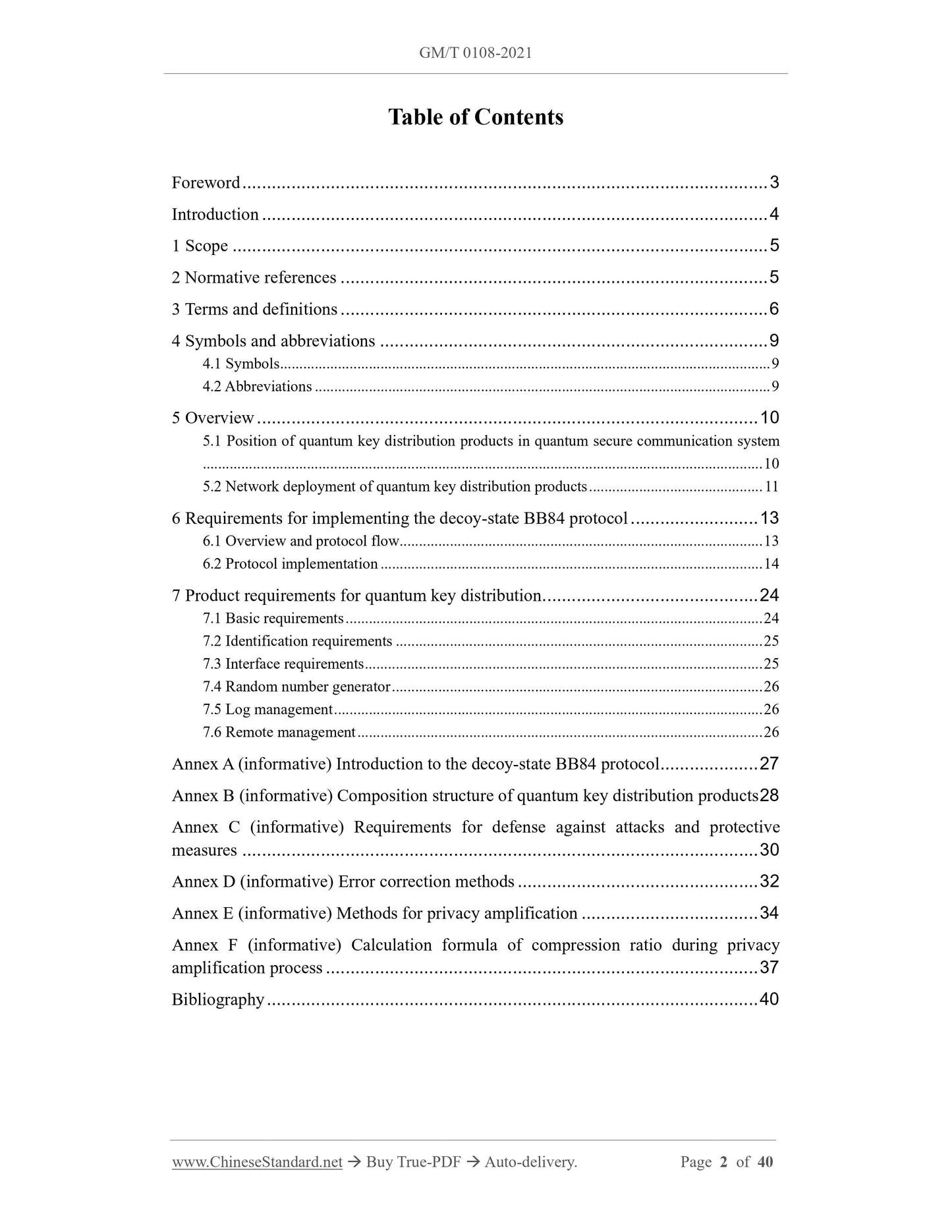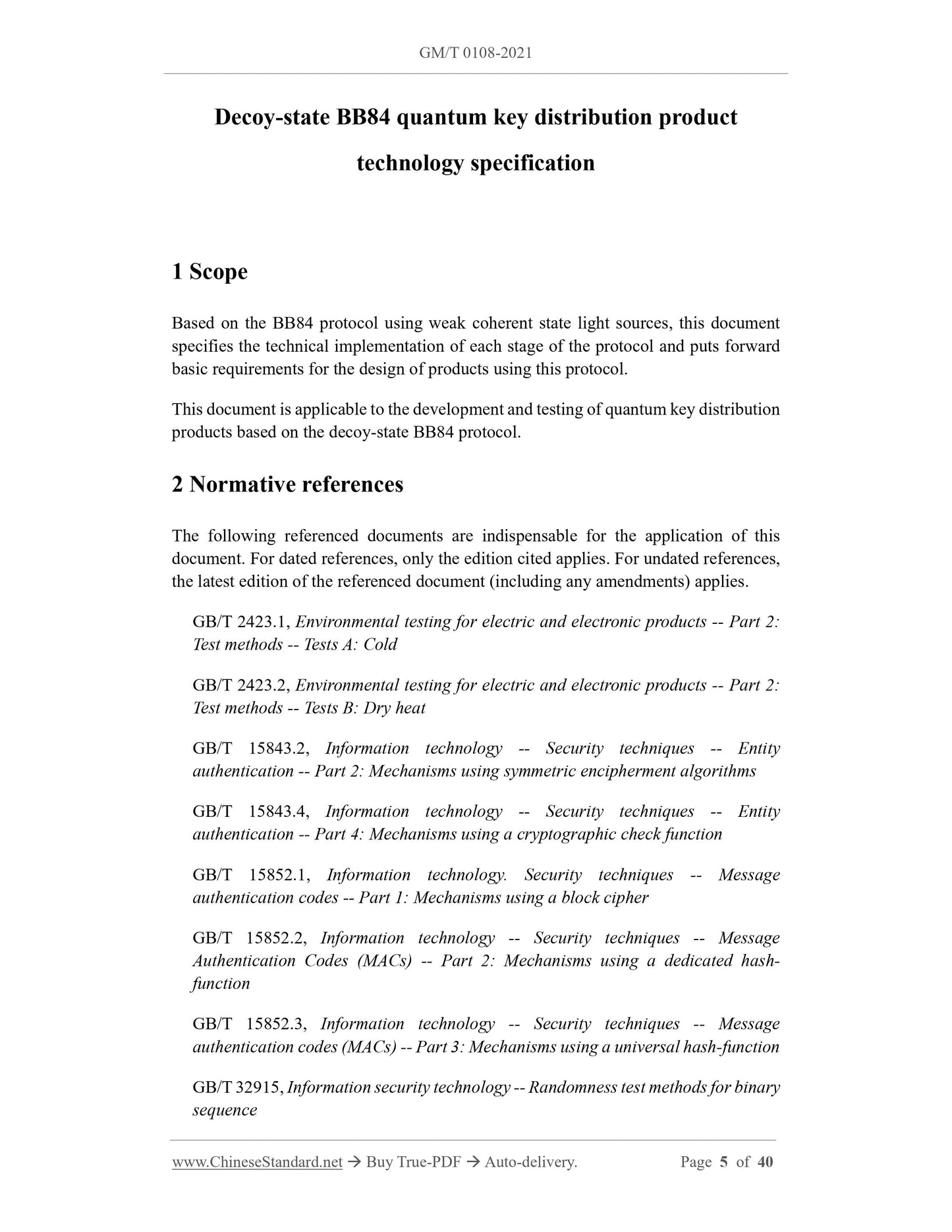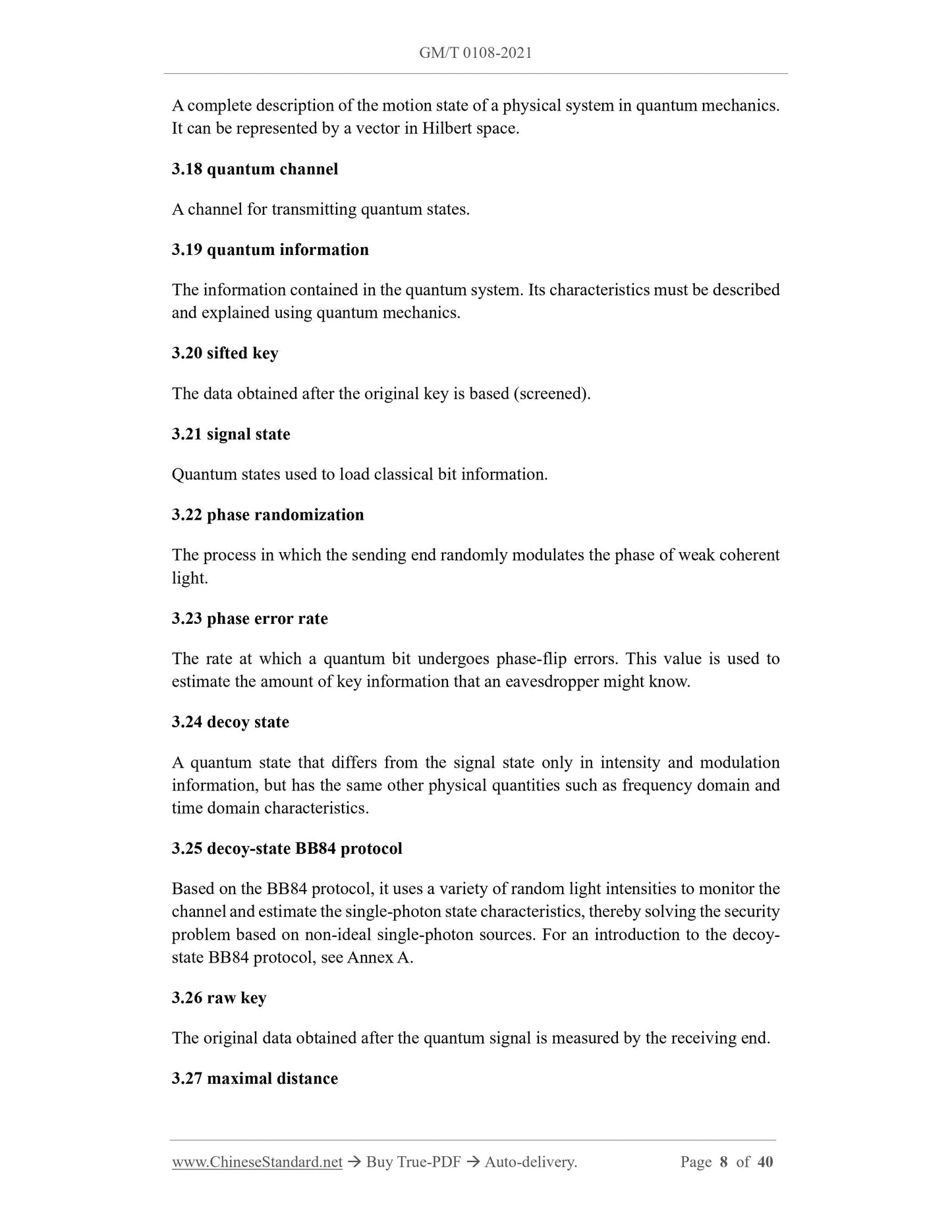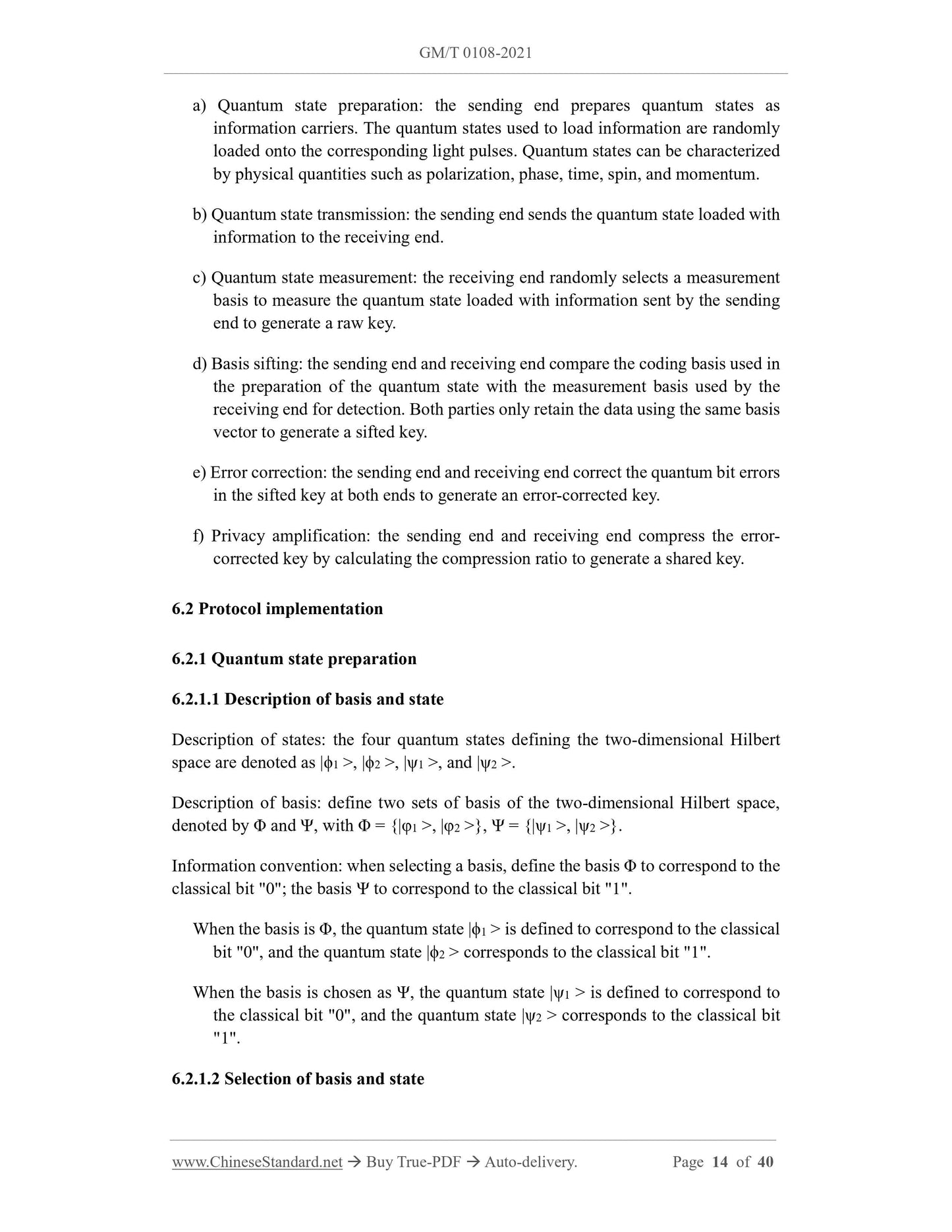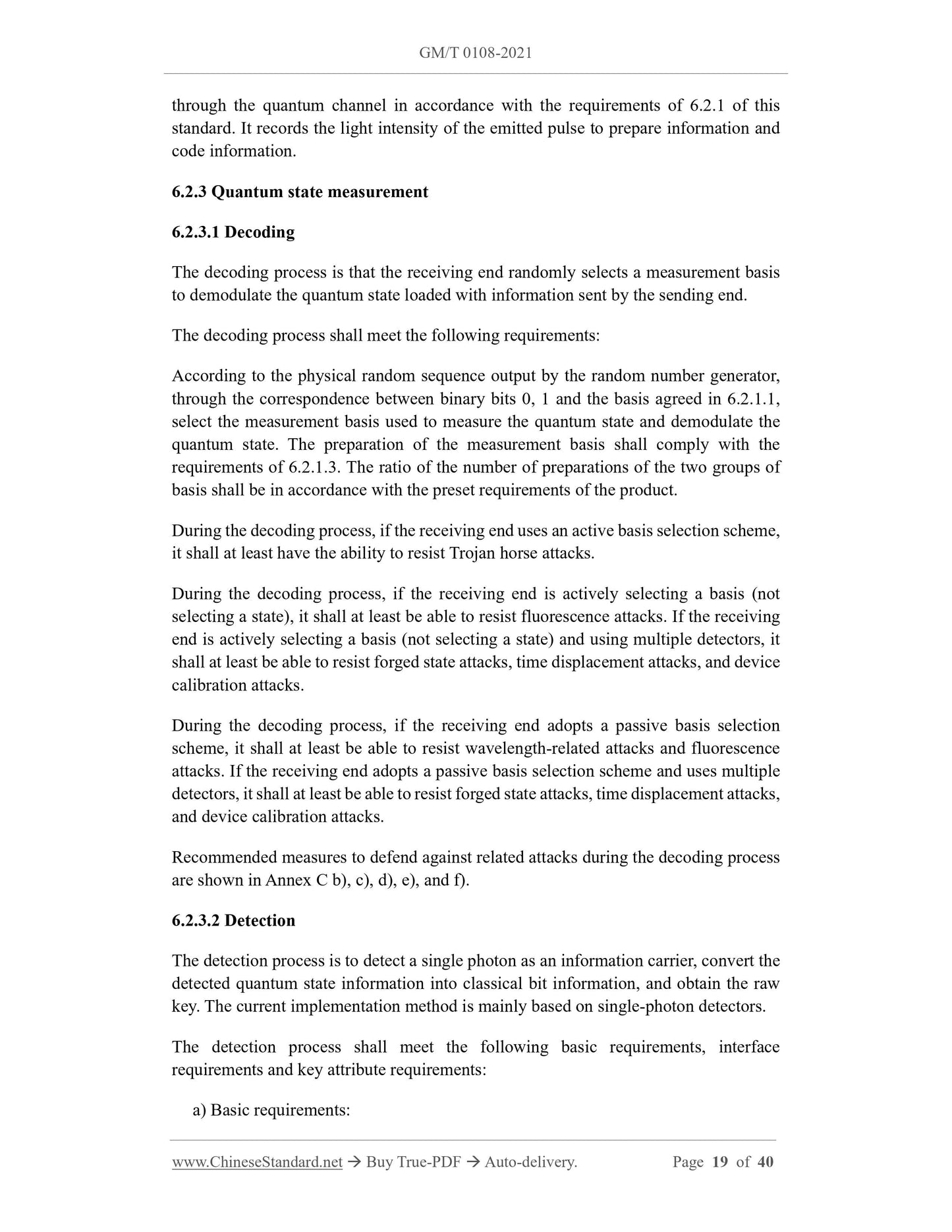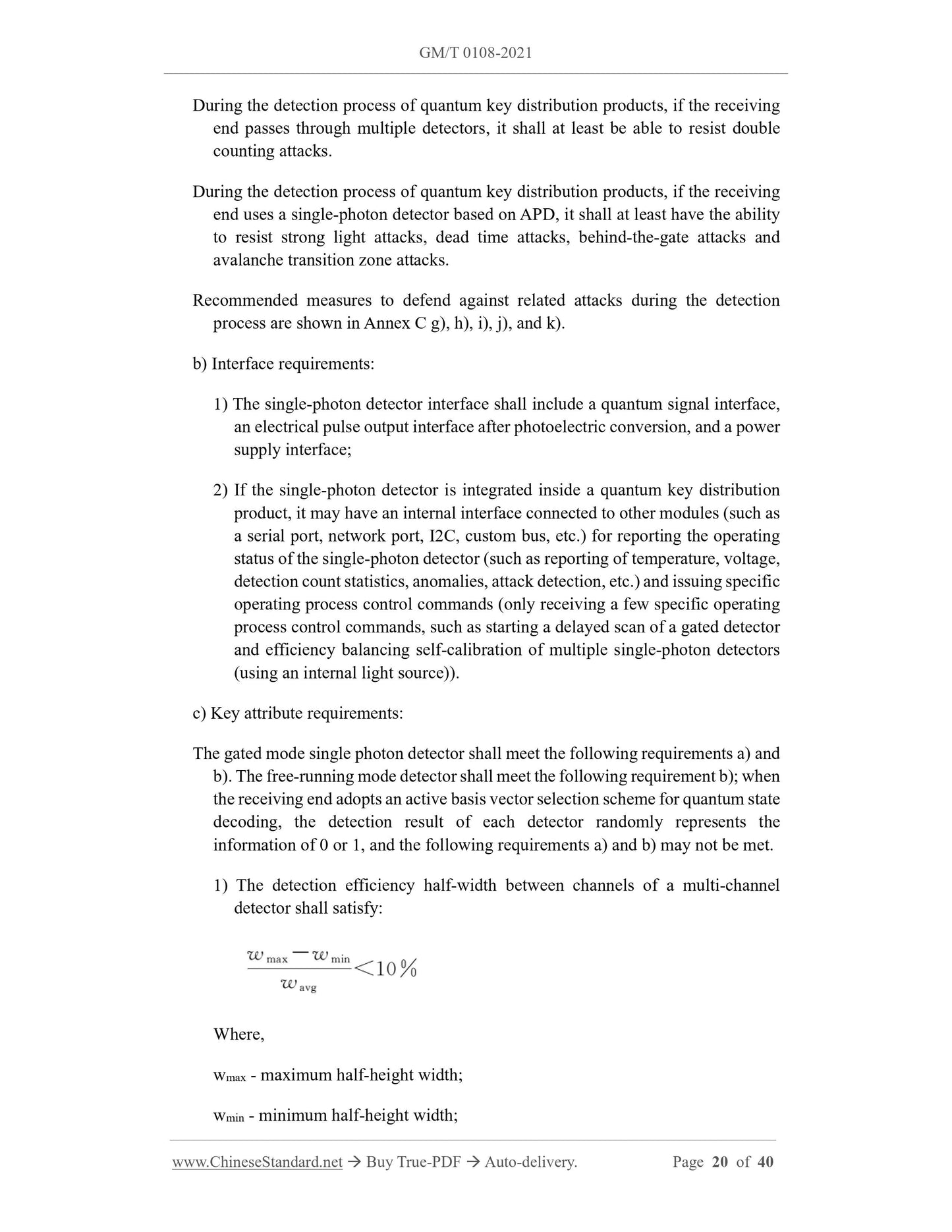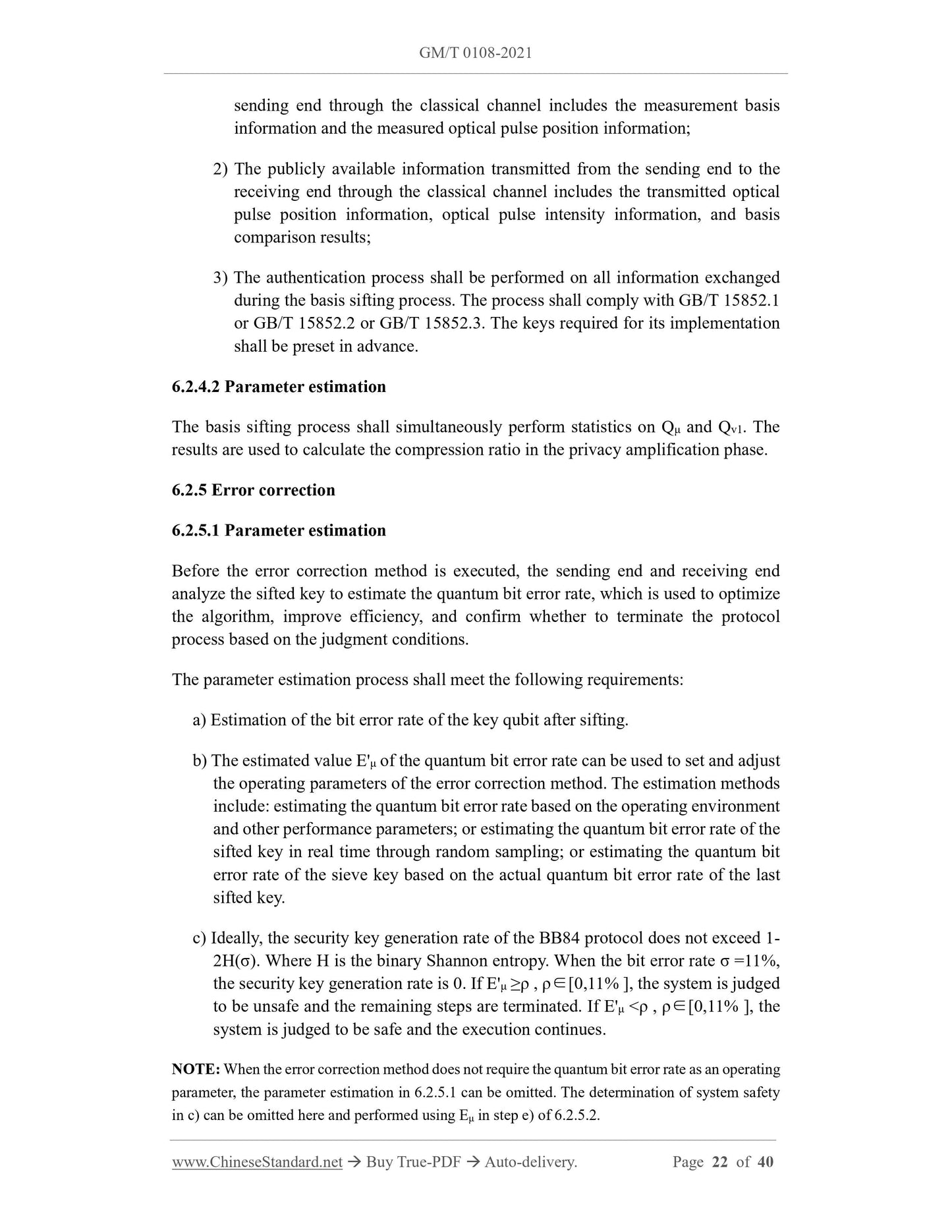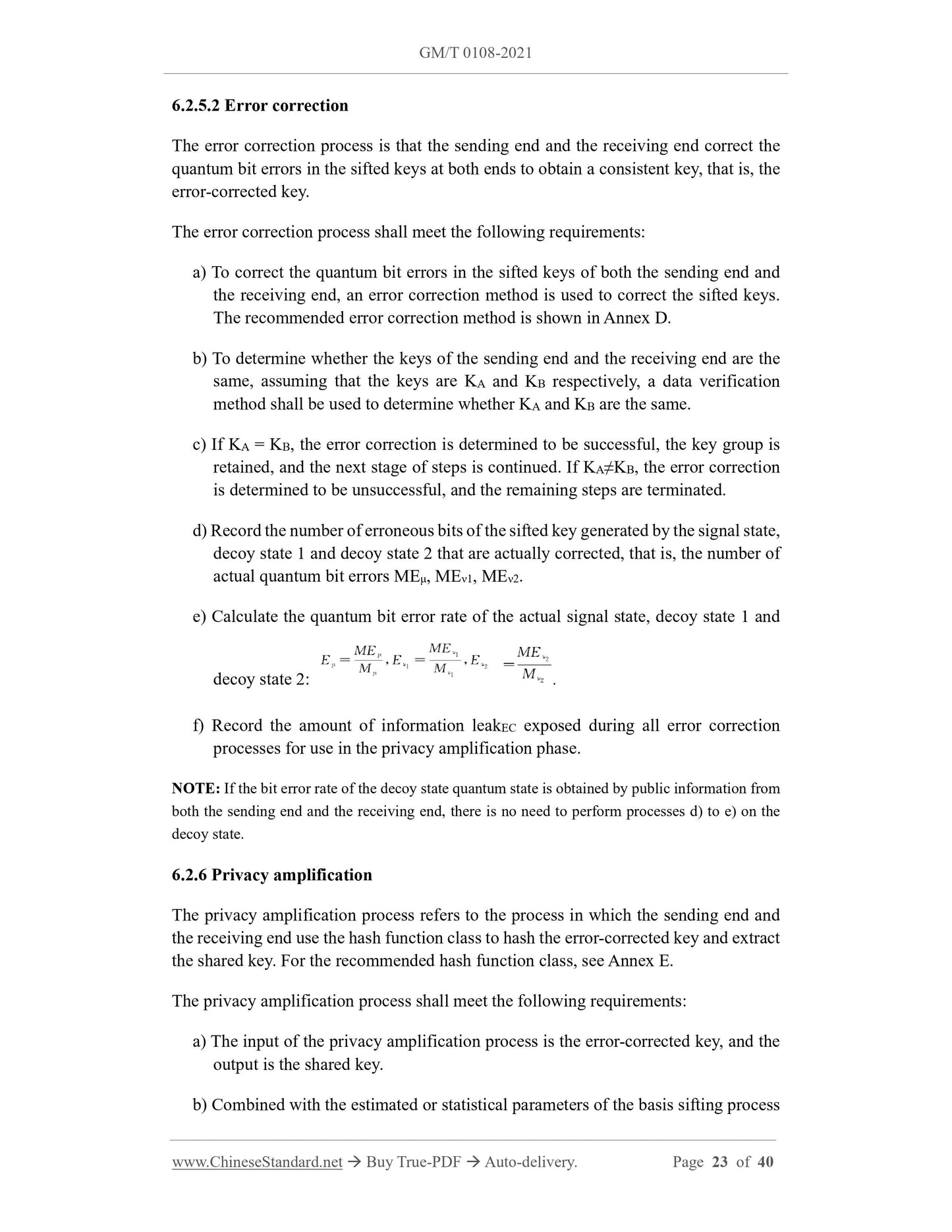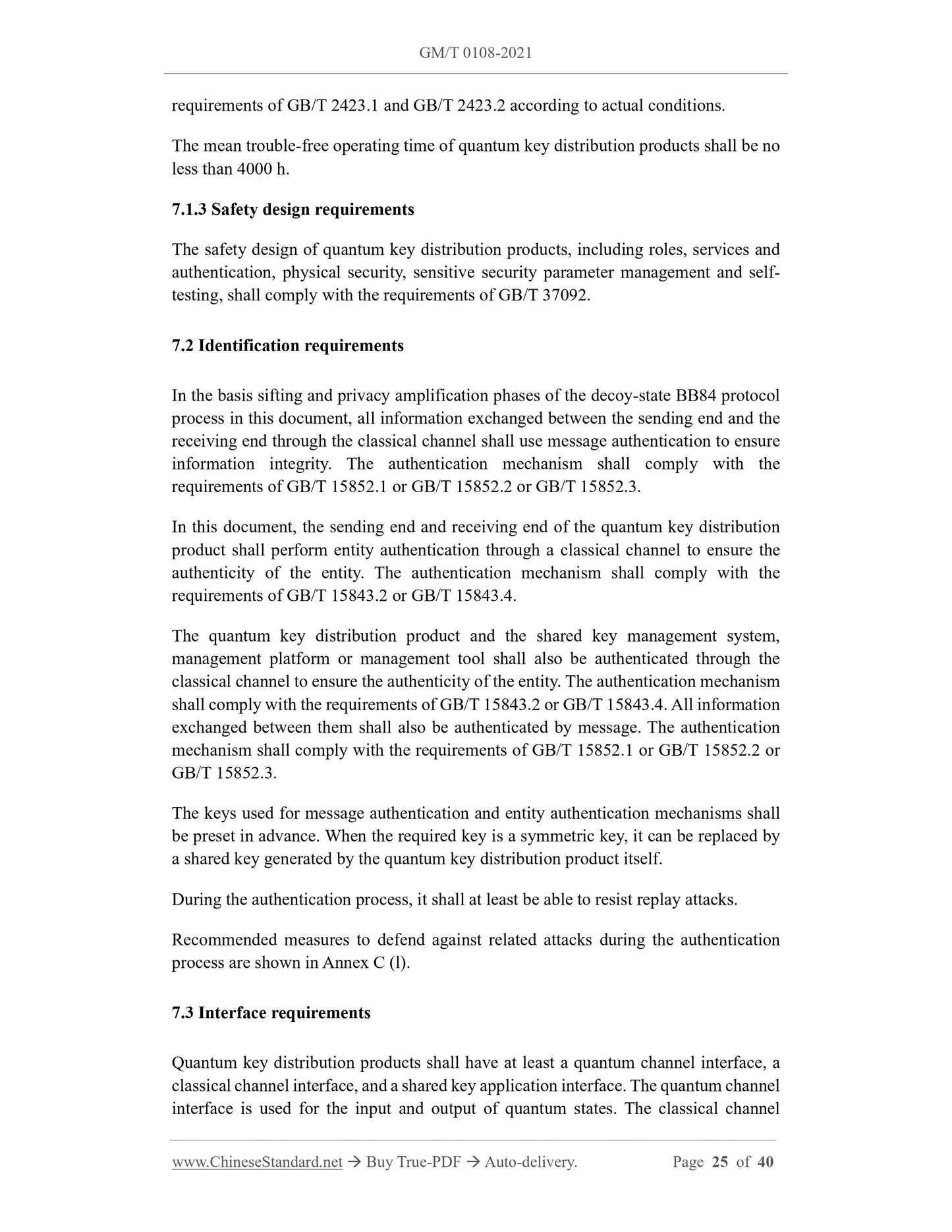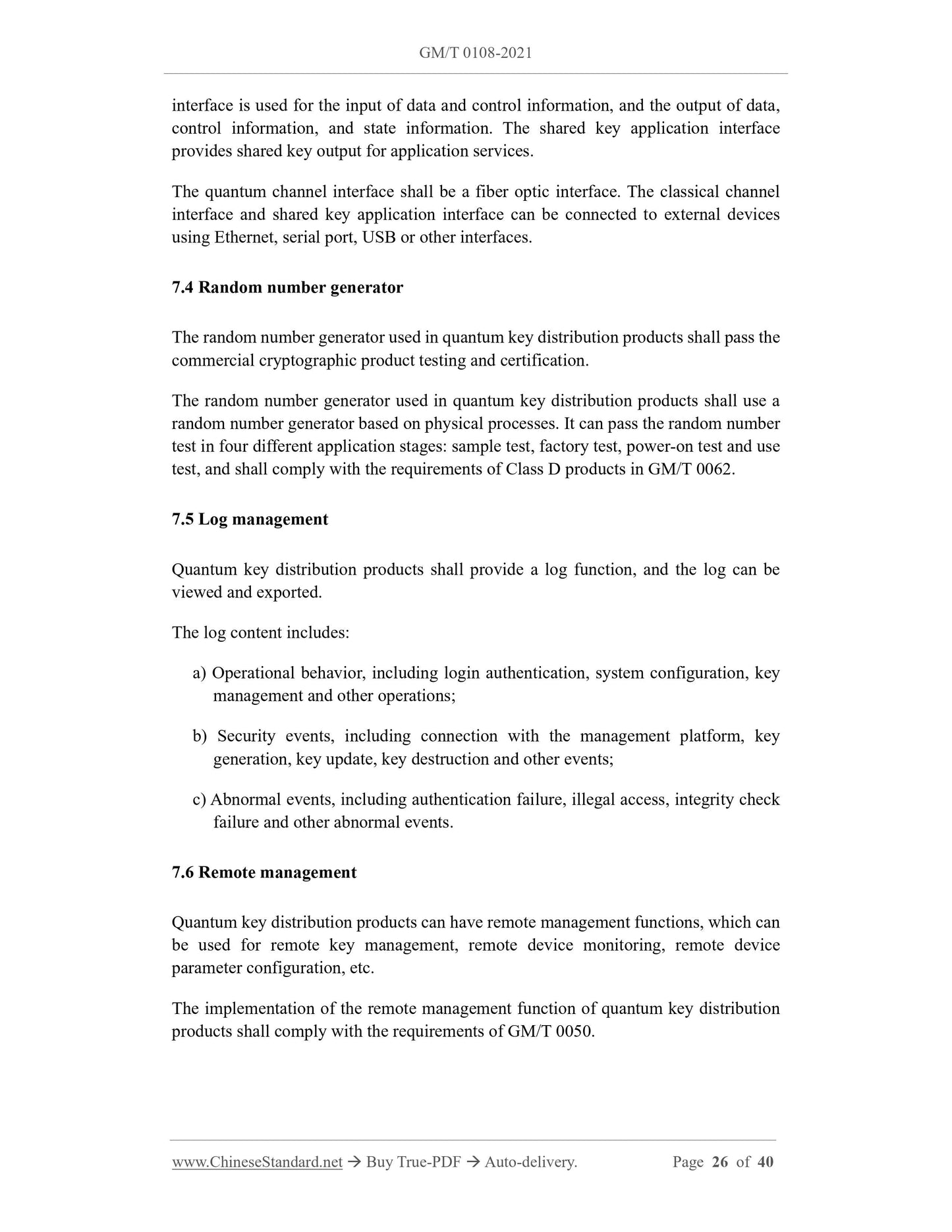1
/
of
12
www.ChineseStandard.us -- Field Test Asia Pte. Ltd.
GM/T 0108-2021 English PDF (GM/T0108-2021)
GM/T 0108-2021 English PDF (GM/T0108-2021)
Regular price
$410.00
Regular price
Sale price
$410.00
Unit price
/
per
Shipping calculated at checkout.
Couldn't load pickup availability
GM/T 0108-2021: Decoy-state BB84 quantum key distribution product technology specification
Delivery: 9 seconds. Download (and Email) true-PDF + Invoice.Get Quotation: Click GM/T 0108-2021 (Self-service in 1-minute)
Newer / historical versions: GM/T 0108-2021
Preview True-PDF
Scope
Based on the BB84 protocol using weak coherent state light sources, this documentspecifies the technical implementation of each stage of the protocol and puts forward
basic requirements for the design of products using this protocol.
This document is applicable to the development and testing of quantum key distribution
products based on the decoy-state BB84 protocol.
Basic Data
| Standard ID | GM/T 0108-2021 (GM/T0108-2021) |
| Description (Translated English) | Decoy-state BB84 quantum key distribution product technology specification |
| Sector / Industry | Chinese Industry Standard (Recommended) |
| Classification of Chinese Standard | L80 |
| Word Count Estimation | 28,253 |
| Date of Issue | 2021-10-18 |
| Date of Implementation | 2022-05-01 |
| Issuing agency(ies) | State Administration of Cryptography |
Share
